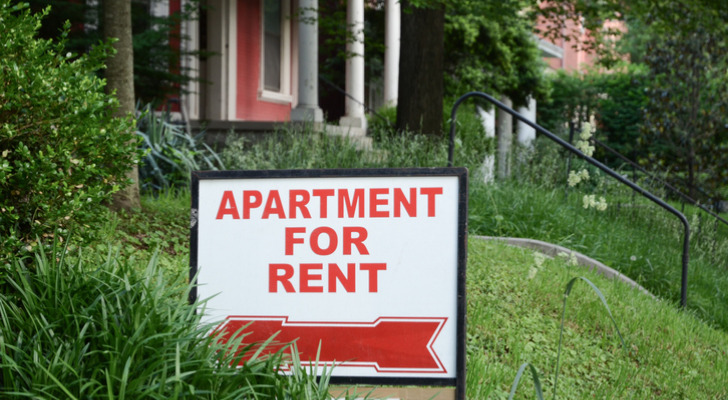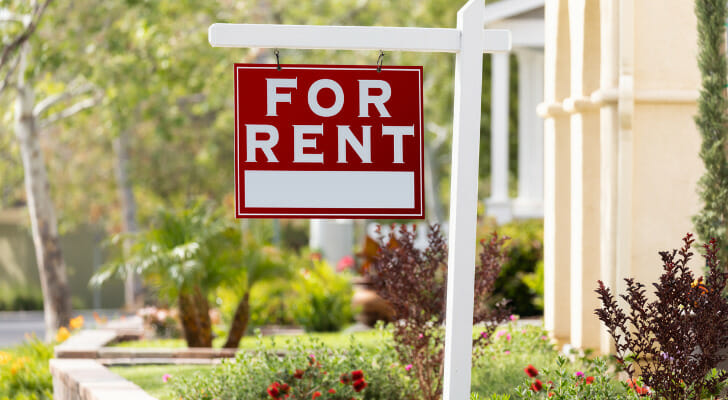Investing in cash flow real estate, also known as rental property, can be an effective way to generate a largely passive stream of income. You buy a property, install a tenant or two and collect monthly rent payments. It sounds simple enough, but there’s a little more involved in making sure that a rental property is a worthwhile investment. Knowing how to calculate cash flow in real estate matters for maximizing profits as a property owner. A financial advisor can help you incorporate real estate into your portfolio.
What Is Cash Flow in Real Estate?
In simple terms, cash flow refers to the movement of money in and out of a business. When you’re discussing real estate cash flows, you’re talking about money that’s generated by the property (i.e. rental income) and money that’s spent in association with the property.
Real estate investments can generate positive cash flow or negative cash flow. When a property has positive cash flow, its income exceeds expenses. When there’s negative cash flow, on the other hand, expenses exceed income.
Positive cash flow is preferable for real estate investors because it means they’re making money on the property or properties they own. The wider the profit margin, the better their return on investment. Positive cash flow can also make real estate investments easier to maintain since you may have a surplus of cash you can use for maintenance, repairs and upkeep.
Negative cash flow means an investor is losing money on a rental property. Negative cash flow can happen if the property sits vacant for extended periods of time or if rental prices aren’t able to keep pace with what it costs an investor to maintain the property.
How to Calculate Cash Flow in Real Estate

Calculating cash flow in real estate starts with knowing a few key details about the property. Specifically, to calculate cash flow for rental properties, you need to know:
- How much gross income the property generates
- Total expenses for the property
- What debts, if any, are associated with the property
Gross rental income represents all of the income the property generates before any expenses are deducted, including payments on a mortgage. Rent is typically the main source of income when you’re calculating cash flow for residential rental properties. But depending on what’s included in your lease agreement, you may also collect income by charging tenants pet fees, late fees or other fees.
On the expenses side, you’re including any and all costs you pay for owning the property. So this can include things like:
- Property taxes
- Insurance
- Property management fees (if you pay someone else to manage the property for you)
- Utilities
- Maintenance and repairs
- Advertising
- Business licenses you may be required to hold in order to rent out the property
- Legal and professional fees (ie., eviction expenses)
You’d also include the property’s vacancy rate here. The vacancy rate represents how many days of the year the property goes without a tenant, meaning it doesn’t generate any income at all. To find the property’s vacancy rate, you’d add up the total amount of time the property sat vacant over the course of a single year, then divide that by the amount of time the property could have been rented for and multiply the answer by 100.
So if the property sat vacant for 16 weeks but could have been rented for 52 weeks, it has a 30.76% vacancy rate (16/52 x 100). The vacancy rate is considered to be an operating expense when renting out property.
Once you have your gross income and expenses, you can move on to the next step which is calculating net operating income (NOI). To find NOI for cash flow real estate you’d simply subtract expenses from income. The resulting number is the amount of cash flow produced by operations. It doesn’t factor in any debt that may be associated with the property. To find the net cash flow after debt service is factored in, you’d subtract debt service from net operating income.
Why Are Cash Flow Calculations in Real Estate Important?
Calculating cash flow for real estate matters because it can help you to determine how profitable a rental property investment is likely to be. Looking at how much you could charge in rent for a particular property isn’t enough to give you an accurate picture. You first have to strip away the operating expenses of the property and any debt payments you have to make in connection with it to figure out how much cash flow you’re left with.
If you have a specific rate of return you’re aiming for, calculating cash flow for real estate can give you an idea of whether a property is likely to meet expectations, exceed them or fall short. There’s no set rate of return that’s considered desirable when investing in rental properties. It’s largely subjective, based on the rental market you’re investing in and your individual goals.
As a rule of thumb, it’s smart to consider properties that pass the 1% test. The 1% rule suggests that a property is likely to be profitable if you can realistically charge 1% of its purchase price in rent. So if you buy a $350,000 condo to rent out then you’d need to be able to charge at least $3,500 in monthly rent.
Whether this is realistic or not can depend on the housing and rental market you’re in. Charging $3,500 for rent in San Francisco or New York, for example, isn’t that farfetched. But charging that same amount for a single-family home in a small town in Iowa probably won’t fly. So it’s important to consider the overall market as well as the cost of living and incomes for that area when applying the 1% rule.
Taxes Can Affect Real Estate Cash Flow

Real estate investments can pay off over time, but the IRS will want their fair share of the rental income you’re bringing in. When performing cash flow calculations for real estate, remember to factor in what you’ll have to pay in taxes on that income. Generally, net rental income is taxed at your ordinary income tax rate. So if you’re in a higher tax bracket, that could mean paying more in taxes on rental income.
You can, however, offset some of what you owe by deducting rental property expenses. Some of the expenses you can deduct include:
- Maintenance and cleaning costs
- Appliance or HVAC replacement
- Mortgage interest
- Property insurance
- Property taxes
- Advertising fees
- Property management fees
- HOA fees or condo fees
- Utilities
- Other services, such as pest control or landscaping
- Legal and professional fees (for example, if you have to pay to evict a tenant)
- Vacancy expenses
You can also deduct depreciation expense on the property. Deducting these expenses can reduce your taxable rental income. Understanding how much you’re likely to owe in taxes for owning a rental property can give you a better idea of how much of your profits you’re really going to keep at the end of the day.
The Bottom Line
Understanding cash flow in real estate matters when weighing new investment opportunities. The last thing you want is to invest in a rental property only to have it turn out to be a money pit. Knowing how to calculate cash flow for real estate could help you as you put together an investment plan and avoid making a bad investment.
Investing Tips
- If you’d like to own rental property without having to do all the hard work of being a property owner, there are easier ways to invest. Real estate crowdfunding platforms, for example, make it possible to invest in commercial and residential properties without having to own the property itself. Real estate investment trusts (REITs) are another option for investing in real estate without buying property. REITs are required to pay out 90% of taxable income to investors as dividends each year, providing you with a consistent stream of income with little effort on your part.
- Consider talking to a financial advisor about whether cash flow real estate could be a good addition to your portfolio. Finding a qualified financial advisor doesn’t have to be hard. SmartAsset’s free tool matches you with up to three financial advisors who serve your area, and you can interview your advisor matches at no cost to decide which one is right for you. If you’re ready to find an advisor who can help you achieve your financial goals, get started now.
Photo credit: ©iStock.com/Feverpitched, ©iStock.com/Feverpitched, ©iStock.com/dcsliminky
